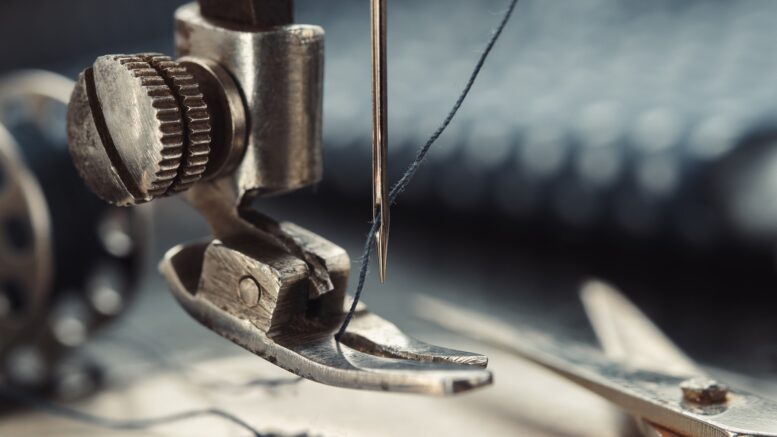The invention of the sewing machine transformed textile manufacturing. It revolutionized how clothing and fabrics were produced. This mechanical device stitches materials like cloth or leather. It was the first widely distributed mechanical home appliance and became a key tool in industrial manufacturing.
These machines are mechanical devices designed for stitching cloth or leather. They typically utilize a needle and shuttle to carry thread and are powered by various means, including treadle, waterpower, or electricity. The sewing machine represents the first widely distributed mechanical home appliance and has played a crucial role in industrial manufacturing.
So you ask, “when was the sewing machine invented?” Let’s find out and see its impact on the industrialization of the medical field.
Historical Development
Several inventors contributed to their development. Barthélemy Thimonnier, a French tailor, designed and manufactured an early version in 1830. He received a patent from the French government to mass-produce uniforms for the French army.
Yet, in 1831, some feared the invention would threaten their livelihoods. Two hundred rioting tailors destroyed Thimonnier’s machines. Despite this setback, the inventor’s design marked a significant step in mechanizing the hand-sewing process.
A more decisive improvement came with the work of Walter Hunt in New York City around 1832-34. Yet, he did not patent his machine. Independently, Elias Howe from Spencer, Massachusetts, developed a similar machine and secured a patent in 1846.
Howe’s machine featured a curved, eye-pointed needle moving in an arc to carry the thread through the fabric. It interlocked with a second thread from a shuttle.
Howe’s machine gained widespread popularity. It led to extensive patent disputes and the establishment of a patent pool. This pool included designs by Isaac Merritt Singer, who became the largest manufacturer. By 1860, over 110,000 mechanical inventions were produced in the United States alone.
Evolution and Modern Uses
Modern sewing machines have diversified into many specialized industrial types. Yet, their fundamental operation remains largely unchanged. Electric motors commonly power contemporary machines. Besides, foot-treadle machines are widely used, especially in developing regions. China is currently the largest producer of sewing machines, and Japan pioneered the development of versatile zigzag machines.
Impact on the Medical Field
Sewing machines have significantly impacted the medical field, particularly in producing medical textiles. Medical garments such as gowns, scrubs, and disposable uniforms are predominantly stitched using them.
These garments are often made from polypropylene (PP) and polyester. These materials are famous for their durability, antibacterial properties, and functionality. The demand for these garments has surged, especially in recent years. Thus necessitating high-speed sewing processes.
Yet, the rapid sewing speeds required to meet high production demands can lead to issues. Some include burnt spots on the fabric, reduced seam strength, and increased thread breakage.
Research has shown that higher tailoring speeds can significantly cause the tailoring needle to heat. This heat can damage the tailoring thread and weaken the fabric. Thus compromising the strength and functionality of the medical textiles.
Technological Advancements and Challenges
Technological advancements over the past decade have made sewing machines more robust, efficient, and durable. Despite these improvements, the high-speed operation required in industrial settings introduces challenges such as increased friction and abrasion within machine components. This affects the overall quality of the seams, both aesthetically and functionally.
To address these issues, researchers have explored various methods to measure and mitigate the effects of needle heating. One technique is embedding thermocouples in needles to monitor temperature.
They also involve developing theoretical models to predict needle heating based on sewing speed and frictional forces. These studies aim to optimize sewing processes to balance high production efficiency with seam strength and quality maintenance.
Conclusion
The invention of the sewing machine revolutionized the production of clothing and other textiles. It became an indispensable tool in various industries, including the medical field. The ability to produce high-quality, durable medical garments quickly and efficiently has profoundly impacted healthcare, especially with the growing need for reusable medical textiles.
Continued innovation will enhance efficiency and quality, addressing high-speed sewing challenges. This ensures medical apparel remains safe, durable, and widely accessible globally. Future advancements will likely lead to more sustainable and environmentally friendly production methods, further benefiting the medical field and beyond.

